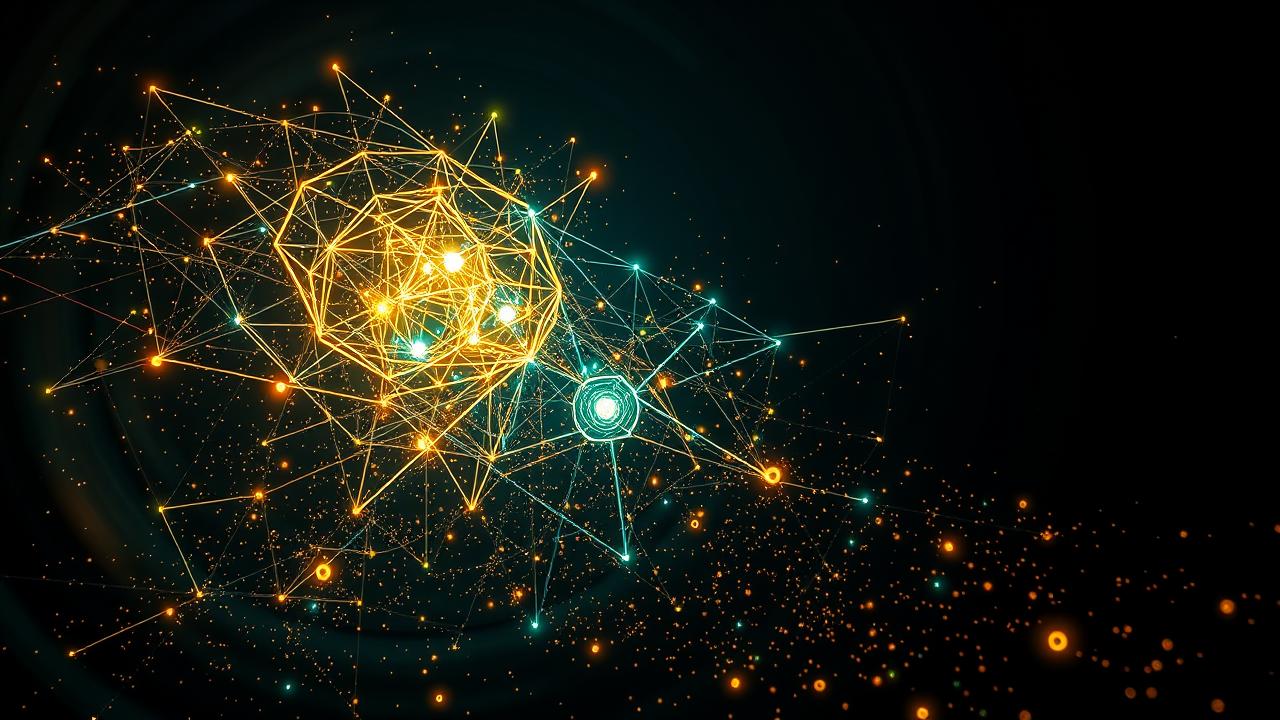The Ghost in Your Wallet, The Echo in Your Head
That cold knot in your stomach when the bills arrive, even if you know you can cover them. The quick, jealous pang when someone else gets a win. That persistent whisper, almost too quiet to notice, that there just won’t be enough – not enough time, money, love, opportunity. It’s a familiar shadow for so many, a silent saboteur of joy and progress. This, my friend, is the insidious grip, and understanding what is a scarcity mindset is the first step to disarming it. Your perspective doesn’t just color your world; it actively builds it, brick by agonizing brick or by expansive vision. The whole game of scarcity vs abundance mindset begins with this recognition.
The Chokehold of ‘Not Enough’ and Your First Gasp of Air
To put it bluntly, a scarcity mindset is the deeply ingrained belief that resources are limited, that life is a zero-sum game, and that you’re perpetually on the verge of running out. It’s a mental framework often forged in the fires of past hardship or subtly absorbed from a world obsessed with lack. The tendrils of this thinking can curl around your finances, your relationships, your career, even your sense of time, squeezing the potential and joy out of them. But here’s the raw, liberating truth: recognizing this pattern isn’t a life sentence. It’s the key. The very act of seeing the bars is the first move towards dismantling the cage.
Unmasking the Gremlin: What This “Scarcity” Thing Really Is
It clings to you, doesn’t it? That phantom weight in your chest when you think about enough. At its core, understanding what is a scarcity mindset means acknowledging a persistent, often irrational fear that you lack, or will lack, something essential. This isn’t just about an empty bank account; it’s a belief system that paints the world in shades of “not enough.”
Its fingerprints are all over common feelings: a gnawing insecurity that you’re not good enough, a flicker of jealousy at another’s success, an almost compulsive need to hoard resources, be it money, information, or even affection. It whispers that if someone else wins, you automatically lose. This is the heart of win-win thinking vs zero-sum thinking; scarcity almost always shoves you into the latter, convinced the pie is too small for everyone to get a decent slice.
Think of it like this: you could be sitting on a metaphorical treasure chest, but if your mind is screaming “poverty!”, you’ll live like a pauper, terrified to spend a single gold coin. It’s a lens that distorts reality, turning potential opportunities into threats and collaborations into competitions.
The Breeding Ground: Where Does This Beast Take Root?
The smell of damp concrete and the gnawing emptiness in his stomach were memories Quinton couldn’t shake, even years later, sitting in his own meticulously clean, if small, workshop. He was a master carpenter now, sought after for his skill, yet every quote he gave felt like a gamble, every new tool purchase a monumental risk. The years his family scraped by after his father’s business failed had branded him with a fear that prosperity was fleeting, a cruel trick. His hands, so skilled with wood, would tremble slightly when he signed checks for new supplies, as if expecting the funds to vanish.
Where does this beast, this whisper of ‘not enough,’ even come from? For Quinton, it was the stark reality of childhood poverty. For others, it might be less obvious. Our brains are, in some ways, old hardware. That “scarcity brain,” as some call it, was wired for a time when the sight of a berry bush meant gorge now, because tomorrow it might be gone, or a rival tribe might find it. Survival itself depended on an acute awareness of lack.
Fast forward to today, that ancient programming can backfire spectacularly. Add to it significant life traumas – a sudden job loss, a betrayal, watching loved ones struggle – and you have fertile ground. Societal pressures, the endless parade of ‘more, more, more’ on social media, the subtle cues that you’re somehow ‘less than’ if you don’t have the latest gadget or the picture-perfect life, all water that seed of scarcity. These experiences collectively sculpt your overall money mindset, cementing a belief that good things are finite and fiercely contested.
The Collateral Damage: How Scarcity Contaminates Everything
The fluorescent lights of the 24-hour diner hummed, casting a sickly glow on Lily’s fourth cup of coffee. It was 3 AM. Again. Her graphic design freelance gigs paid well, but the fear of a dry spell, of clients disappearing, kept her tethered to her laptop, chasing every lead, undercutting her own rates “just to be safe.” Sleep was a luxury she felt she couldn’t afford, and her friendships were wilting from neglect. The irony? Her talent was undeniable, her portfolio impressive. But the belief that opportunity was a shrinking puddle made her frantic, not strategic.
Lily’s story isn’t unique. This mindset is a corrosive agent. Personally, it brews a constant undercurrent of anxiety and stress. Your outlook can turn perpetually gray, always anticipating the worst. Your decision-making, especially financially, becomes warped. You might hoard pennies while missing out on life-enriching experiences or sound investments, all because the fear of future lack eclipses present possibility.
Relationships? Oh, they take a beating. Scarcity can breed possessiveness, jealousy, or a constant score-keeping of who gives and who takes. It can make you see partners, friends, even family as competitors for limited affection or resources. And in your career or business? It’s a killer. The scarcity mindset in business translates into missed opportunities because you’re too afraid to invest, or a toxic work environment because collaboration feels like giving away your edge. It’s a self-fulfilling prophecy of struggle, a tight loop of fear leading to actions that reinforce the fear.
Seeing is Believing: A Quick Look at the Scarcity Trap
Sometimes, hearing it laid out plainly can be the jolt we need. The video below offers a concise explanation of the scarcity mindset, touching on its common causes and offering initial thoughts on how to begin breaking free. It’s a good, quick primer before we delve deeper into recognizing its symptoms in your own life and, more importantly, how to forge a new path.
Source: Productivity Guy – YouTube
The Telltale Tremors: Are You Dancing with the Devil of Dwindling Resources?
That little voice, you know the one. It’s a master of disguise. Sometimes it’s the ‘realist,’ sometimes the ‘prudent planner,’ but its song is always the same: “There isn’t enough. You aren’t enough.” Recognizing these whispers is like turning on the lights in a haunted house – suddenly, the monsters look a lot less terrifying and a lot more like old coats on a hanger.
Do you find yourself constantly measuring your life against others, feeling a sting of envy or inadequacy if someone else seems to have ‘more’? That’s a classic. Or perhaps it’s an overwhelming fear of loss – clinging tightly to what you have, terrified it will be snatched away, even if it’s something you don’t truly need or enjoy. The focus relentlessly drifts to what’s missing, rather than appreciating what’s present. Pessimism becomes your default setting, always bracing for the next disaster. You might feel perpetually behind, like you’re running a race you can never win, viewing others not as fellow travelers, but as competitors for a limited supply of success or happiness. This constant stress is a heavy burden when what you truly seek is overcoming fear of not enough.
Forging a New Reality: The Alchemy of Abundance
The dusty attic air felt thick with the ghosts of past failures as Karim, a part-time coder and aspiring app developer, stared at his latest rejection email. His app idea, a neighborhood skill-sharing platform, was innovative. But every “no” felt like confirmation of his deepest fear: that he just didn’t have what it takes, that good ideas were for other, luckier, people. His internal narrative was a loop of “not good enough,” “too risky,” “bound to fail.” This wasn’t just about one app; it was about a lifetime of believing the pie was too small.
But what if the pie is infinite? What if, instead of a cramped attic, you could build a skyscraper? This shift in perspective is the core of what is an abundance mindset. It’s not about pretending problems don’t exist; it’s about believing in your capacity to find solutions, to create value, to attract opportunities. It’s the conviction that there is enough – enough success, enough love, enough resources – for everyone, yourself included.
So, how do you actually make the leap? The strategies for how to shift from scarcity to abundance are legion, but they begin with metacognition – becoming the curious, compassionate observer of your own thoughts. Start by catching those scarcity-driven narratives red-handed. Then, actively deploy gratitude; even a simple daily list of three things you’re thankful for can begin to rewire your brain. Visualization isn’t just woo-woo; it’s mental rehearsal for success. Use abundance mindset affirmations – not as magic spells, but as declarations of your intent and new beliefs. “I am capable,” “Opportunities flow to me,” “I create value.” Mindfulness anchors you in the present, where fear of the future has less power. The benefits of an abundance mindset are profound, touching every area of life. Even for those in charge, cultivating an abundance mindset for leaders can transform organizations from fear-driven hierarchies to collaborative powerhouses.
For Karim, this meant starting small. He began by listing three tiny coding wins each day. He wrote one affirmation – “My skills create solutions” – on a sticky note by his monitor. It felt silly, at first. A bit like trying to move a mountain with a teaspoon. But slowly, almost imperceptibly, the heavy air in the attic started to feel a little lighter.
Life Through Two Lenses: Scarcity vs. Abundance Played Out
The difference isn’t just theoretical; it’s etched in the daily choices and ultimate outcomes of lives lived. Providing some scarcity vs abundance mindset examples can make it crystal clear. Take personal finance. Scarcity screams, “Hoard every penny! Never spend! Disaster is lurking!” It leads to a sock drawer full of cash that loses value to inflation, and a life devoid of joy because every expenditure feels like a dangerous loss. Abundance, however, understands responsible stewardship. It invests wisely, not just in stocks, but in experiences, in learning, in tools that create more value. It sees money as a resource to be circulated and grown, not just clung to.
In relationships, scarcity breeds jealousy and control. “If they talk to someone else, they might leave me!” “If I help them, they’ll get ahead and forget me!” It’s a recipe for suffocating partnerships. Abundance fosters mutual support, celebrating each other’s successes because it believes love and connection are expansive, not limited. One person’s joy doesn’t diminish another’s.
Consider careers. The scarcity-minded individual sees a colleague’s promotion as a personal slight, one less spot for them. They might guard information, undermine others, or fear taking risks. The abundance-oriented professional, however, believes in collaborative growth. They share knowledge, mentor others, and see the collective success as a rising tide that lifts all boats. They understand that creating value often opens more doors than hoarding perceived advantages. The contrast is stark: one path leads to isolation and stagnation, the other to connection and continuous expansion.
Armory for the Mind: Allies in Your Shift
Let’s be clear: no app will magically flip your mindset switch. That profound internal work, that gritty commitment to seeing the world anew? That’s all you, warrior. But, just as a master craftsperson uses fine tools, you can leverage technology to support and reinforce your journey from the barren lands of scarcity to the fertile fields of abundance.
Think of budgeting apps not as digital jailers, but as instruments of clarity, giving you a true picture of your financial landscape so you can make empowered choices, not fearful reactions. Habit tracking apps can be your steadfast allies in building those new, positive routines – like daily gratitude or mindfulness practice – turning them from aspirations into automatic responses. For capturing those fleeting moments of thankfulness or crafting your powerful affirmations, journaling apps offer a private, accessible space. And when the mental noise gets too loud, meditation apps can guide you back to a state of calm presence, creating the quiet needed to hear the whispers of abundance over the shouts of scarcity. These are not crutches; they are amplifiers for the new song you’re teaching your mind to sing.
Deeper Waters: Literary Guides for the Mindset Mariner
Sometimes, a single article isn’t enough to truly plumb the depths of a concept that has shaped so much of our lives. For those ready to dive deeper, to truly understand the mechanics of scarcity and the transformative power of abundance, these books offer powerful insights and practical wisdom. They’re not just words on a page; they’re maps to new territories within yourself.
-
Scarcity Brain: Fix Your Craving Mindset and Rewire Your Habits to Thrive with Enough by Michael Easter: This book gets into the nitty-gritty of why our brains are so easily hijacked by scarcity cues, exploring the evolutionary and modern triggers. Prepare for some “aha!” moments as you recognize your own patterns, and discover strategies to rewire those ancient circuits for modern thriving. It’s a fascinating look under the hood.
-
The Abundance Mindset: The Keys to Attract Success, Wealth, and Happiness by Robert Peterson: If you’re looking for a direct, actionable guide to cultivating that feeling of “enough and more,” Peterson lays out clear principles. It’s less about abstract theory and more about the “how-to” of shifting your internal magnets to attract what you desire. A solid choice for those who want practical steps.
-
Abundance Now: Amplify Your Life & Achieve Prosperity Today by Lisa Nichols: Nichols brings an infectious energy and a powerful personal story to the table. This isn’t just about financial abundance; it’s about amplifying all areas of your life. Expect a dose of high-octane inspiration blended with concrete techniques to break through self-imposed limitations. You might just feel like you can take on the world after reading this.
Untangling the Knots: Your Questions Answered
That little itch of curiosity, the question that pops up just as you think you’ve got a handle on things? That’s the mind reaching for more clarity, and it’s a good thing. Here are some common queries about what is a scarcity mindset, answered with the kind of directness that cuts through the fog.
What’s a real-world example of a scarcity mindset in play?
Picture this: At a potluck, someone with a scarcity mindset might rush to the buffet table first, piling their plate high, secretly worried the best dishes will run out before they get their share. They might even take an extra serving of something they don’t love, “just in case.” It’s not about genuine hunger; it’s the fear of missing out, the belief that good things are limited and you have to grab yours fast, even at the expense of others or your own actual enjoyment.
What’s the actual root cause of this scarcity thinking?
Often, it’s a cocktail of factors. As mentioned, there’s our evolutionary hangover – the “scarcity brain” wired for survival in resource-poor environments. Then, layer on personal experiences: growing up in poverty where every penny was counted, witnessing a sudden financial catastrophe, or even absorbing the anxieties of parents who constantly worried about “enough.” Societal messages that equate worth with wealth or possessions also play a huge role, constantly telling us we lack something. It’s rarely one single thing, more like a slow accumulation of beliefs confirmed by challenging experiences.
What are the common symptoms that scream ‘scarcity mindset’?
It often manifests as a persistent feeling of being behind, no matter how much you achieve. You might find yourself obsessively comparing yourself to others, feeling jealous or resentful of their successes because you believe it means less for you. There can be an intense fear of loss, leading to hoarding (money, possessions, even information) and an unwillingness to take calculated risks. Pessimism can be a constant companion, and you might view others more as competitors than collaborators. Sometimes, it’s an inability to celebrate your own wins because you’re already worrying about the next thing you lack.
Okay, I see it. How do I actually break free from this scarcity loop?
The first, most powerful step is awareness – really seeing these thought patterns for what they are, as Quinton, Lily, and Karim began to do. Then, actively challenge them. When the thought “I’ll never have enough” pops up, counter it: “What evidence do I have for that? What small step can I take towards my goal today?” Cultivate gratitude like it’s your most important crop; consciously focusing on what you do have shifts your brain’s chemistry. Practice generosity – giving your time or resources, even in small ways, reinforces a sense of abundance. And sometimes, if the roots are really deep, talking to a therapist or coach can provide invaluable tools and support to help you rewrite those old, limiting scripts.
Beyond the Horizon: Charting Your Own Course
The journey from scarcity’s shadow into the light of abundance is ongoing. If you’re hungry for more, here are some pathways to explore. Each link opens a door to deeper understanding or practical tools. Dive in where your curiosity leads.
- Headspace on Overcoming Scarcity: Mindfulness techniques and perspectives from a leader in meditation apps.
- PositivePsychology.com’s Strategies: A resource hub offering scientifically-backed insights into transforming a scarcity mindset.
- Cleveland Clinic on Scarcity Mindset: Medical and health-focused insights into the causes and solutions for scarcity thinking.
- APA – The Psychology of Scarcity: An article from the American Psychological Association explaining the “tunneling” effect of scarcity on our cognitive bandwidth.
- r/Mindfulness: A vibrant online community for discussing and learning about mindfulness practices, often a key to shifting perspectives.
- r/selfimprovement: A Reddit community dedicated to broader discussions on personal growth, including strategies for mindset shifts.
Your First Step Out of the Quicksand
The weight of “not enough” can feel like quicksand, pulling you down with every struggle. But understanding what is a scarcity mindset is the rope tossed your way. You don’t have to dismantle the entire prison of limiting beliefs overnight. That’s not how transformation works. It works one conscious breath, one challenged thought, one small act of faith at a time.
So, what’s your one thing? Today. Right now. Will you grab a notebook and jot down three things you’re genuinely grateful for, no matter how small? Will you catch one negative, scarcity-driven thought and flip it on its head, arguing for your own potential? Pick one. Just one. That single step is a declaration. It’s you, telling the universe – and more importantly, yourself – that you’re ready for more. The path to an abundant life isn’t a sprint; it’s a journey taken one empowered choice after another. Begin.






